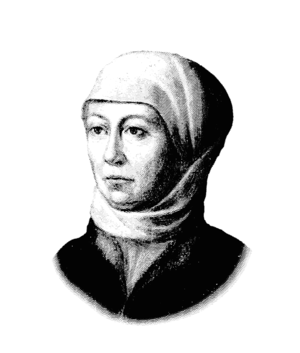
“That fire which all the world shall never be able to quench.” So wrote theologian Richard Sibbes of the spiritual passion God kindled at the dawn of the Reformation. On this, its 500th anniversary, we are remembering it through some of its important contributors, courtesy of desiringgod.org . . .
Wibrandis Rosenblatt
1504–1564
The Bride of the Reformation
By Noël Piper
In 1504, Wibrandis Rosenblatt was born in Säckingen, Germany. Over the next sixty years, she would marry and be widowed four times, inspiring one writer to describe her as the Reformationfrau — “the Bride of the Reformation.”
Ludwig Keller
Her 1524 marriage to Ludwig Keller was short lived. In July 1526, Wibrandis, 22, was a widow with a daughter, also named Wibrandis.

Among the Reformation leaders, clerical marriage was becoming “a new way of serving the community of Jesus Christ.” Johannes Oecolampadius had argued publicly for the freedom of pastors to marry, though he himself was still single (Frau Wibrandis, 15). Oecolampadius’s friend Wolfgang Capito wrote to him, “If a suitable person is pointed out to you, I think you should not decline. To have a mate of like zeal will be a glory to the Lord.”
Johannes Oecolampadius
Someone must have pointed out Wibrandis. On March 15, 1528, she and Oecolampadius were married, raising some eyebrows at their age difference — 45 and 24 — but causing most friends to rejoice. He wrote in a letter, “The Lord has given me a sister and wife . . . a widow with several years experience in bearing the cross. I wish she were older, but I see in her no signs of youthful petulance. Pray the Lord to give us a long and happy marriage” (Women of the Reformation, 82).
At this point, pastors had not been marrying for several hundred years. Wibrandis and other wives of sixteenth-century Reformers became friends through letters, determining and shaping their new role as they lived it.
Soon, three children were added to their family — Eusebius, Aletheia, and Irene — before the death of Oecolampadius in November 1531 due to blood poisoning from an abscess. That same month, Capito’s wife Agnes also died.
Wolfgang Capito
Martin Bucer’s matchmaking propensities sprang into action. “My choice for Capito is the widow of Oecolampadius. . . . He writes me that he has been very touched by the sight of the widow Wibrandis and the orphaned children” (Women of the Reformation, 85). Wibrandis and Capito were married on August 11, 1532.
Capito was pastor of New St. Peter’s Church in Strasbourg. Their household included Wibrandis’s mother and the four children of her previous marriages. Five more were born — Agnes, Dorothea, Irene (after the death of Irene Oecolampadius), John Simon, and Wolfgang.
“Since she did curb his foibles, balance his budget, and keep his household sweet, her achievement belongs to the annals of unrecorded heroisms” (Women of the Reformation, 87). But plague in 1540 took the children Eusebius, Dorothea, Wolfgang, and also Capito himself.
Martin Bucer
News of Capito’s death reached the Bucers when Elisabeth Bucer was close to death. Elisabeth pled with her husband and Wibrandis that they marry after she died, and they did in April 1542.
Bucer wrote, “There is nothing that I could desire in my new wife save that she is too attentive and solicitous. She is not as free in criticism as was my first wife. . . . I only hope I can be as kind to my new wife as she is to me. But oh, the pang for the one I have lost” (Women of the Reformation, 87–88).
One can imagine Wibrandis’s similar grief for three husbands. For the fourth time, she adapted to a new husband, learning how they would love and support each other according to their particular needs, ministries, and preferences.
By 1548, new laws required Protestant churches to fulfill conditions that Bucer could not endorse. He fled into exile in England, and taught at Cambridge, while assisting in biblical translation and developing liturgy. After only a year, suffering a cold, damp winter and a long list of physical ailments, he urged Wibrandis to come. She came and eventually brought the family.
During Bucer’s last months, Wibrandis nursed him almost constantly, doing also whatever was required for caring for the rest of her family, consisting of the children and her mother. After her husband’s death in February 1551, Wibrandis wrote numerous articulate letters to sort out their finances and move the family back to Strasbourg. Some were in German, some in Latin, revealing her facility with language and languages.
Wibrandis the Woman
Lest we are tempted to see a passive woman swept up by circumstances and the decisions of imposing men, here is Wibrandis’s forceful voice to her son Simon John Capito, away at university:
I haven’t heard from you for some time, but I well know that if I had, the news would not have been comforting. . . . If only I might live to the day when I have good news from you. Then would I die of joy. . . . If you would follow in the footsteps of your father, then Grandma, the sisters, and the in-laws would lay down their very lives for you. . . . If you will behave yourself properly, come home. If you won’t, then do as you will. I wish you a good year. Your faithful mother. (Women of the Reformation, 93–94)
In 1564, Basel lost 7,000 to plague, including Wibrandis Rosenblatt. She was buried beside Oecolampadius.
Today in Bad Säckingen, her birthplace, is Wibrandis-Rosenblatt-Weg, a short street leading to the bank of the Rhine. Beside the street towers the steeple of the Evangelische Kirchengemeinde, a Protestant church.
Recent Comments